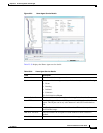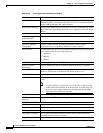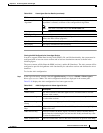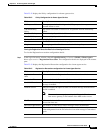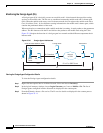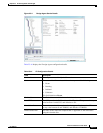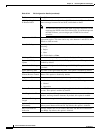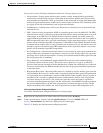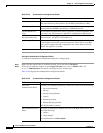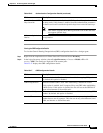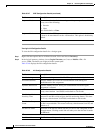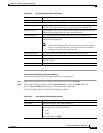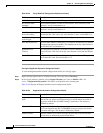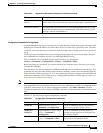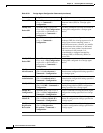
25-75
Cisco Prime Network 4.0 User Guide
OL-29343-01
Chapter 25 Monitoring Mobile Technologies
LTE Networks
You can also view the following configuration details for a Foreign Agent service:
• Advertisement—Foreign agents advertise their presence on their attached links by periodically
multicasting or broadcasting messages called agent advertisements. Mobile nodes listen to these
advertisements and determine if they are connected to their home link or foreign link. Rather than
waiting for agent advertisements, an MN can also send an agent solicitation. This solicitation forces
any agents on the link to immediately send an agent advertisement.
• Authentication—Authentication verifies users before they are allowed access to the network and
network services.
• GRE—Generic routing encapsulation (GRE) is a tunneling protocol used by Mobile IP. The GRE
tunnel interface creates a virtual point-to-point link between two routers at remote points over an IP
internetwork. If the GRE for Cisco Mobile Networks feature is enabled, the mobile router will
request GRE encapsulation in the registration request only if the FA advertises that it is capable of
GRE encapsulation (the G bit is set in the advertisement). If the registration request is successful,
packets will be tunneled using GRE encapsulation. If the GRE for Cisco Mobile Networks feature
is enabled and the mobile router is using collocated care-of address (CCoA), the mobile router will
attempt to register with the HA using GRE encapsulation. If the registration request is successful,
packets will be tunneled using GRE encapsulation.
• HA Configurations—Once the mobile node roams to a new network, it must register with the home
agent as being away from home. Its registration is sent by way of the Foreign Agent (FA), the router
providing service on the foreign network. A security association between the home agent (HA) and
the foreign agent (FA) is mandatory.
• Proxy Mobile IP—Proxy Mobile IP supports Mobile IP for wireless nodes without requiring
specialized software for those devices. The wireless access point acts as a proxy on behalf of
wireless clients that are not aware of the fact that they have roamed onto a different Layer 3 network.
The access point handles the IRDP communications to the foreign agent and handles registrations
to the home agent.
• Registration Revocation—Registration Revocation is a method by which a mobility agent (one that
provides Mobile IP services to a mobile node) can notify the other mobility agent of the termination
of a registration due to administrative reasons or MIP handoff. When a mobile changes its point of
attachment (FA), or needs to terminate the session administratively, the HA sends a registration
revocation message to the old FA. The old FA tears down the session and sends a registration
revocation acknowledgement message to the HA. Additionally, if the PDSN/FA needs to terminate
the session administratively, the FA sends a registration revocation message to the HA. The HA
deletes the binding for the mobile, and sends a registration revocation acknowledgement to FA.
Viewing the Advertisement Configuration Details
To view the Advertisement configuration details for a foreign agent:
Step 1 Right-click the required device in Prime Network Vision and choose Inventory.
Step 2 In the logical inventory window, choose Logical Inventory > Context > Mobile > FA > FA
service > Advertisement. The details are displayed in the content pane.
Table 25-45 displays the Advertisement configuration details.



